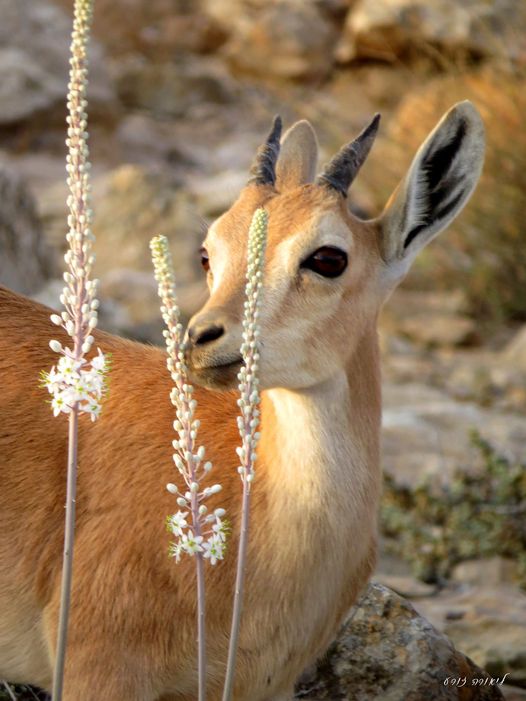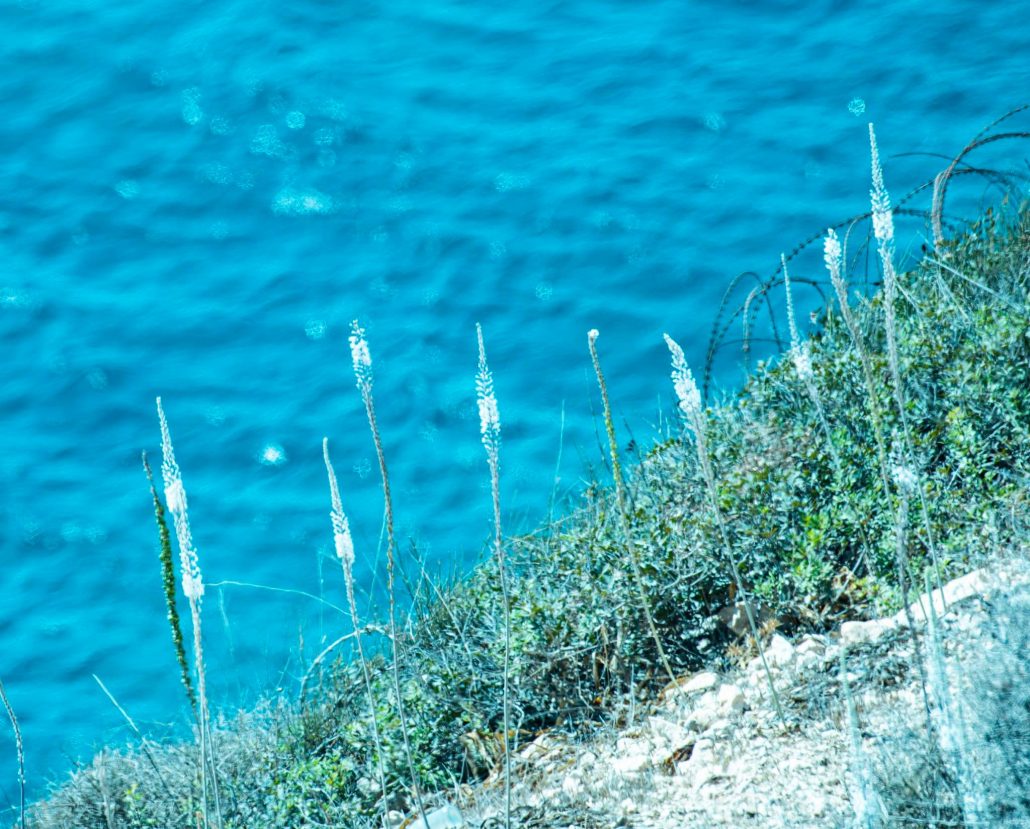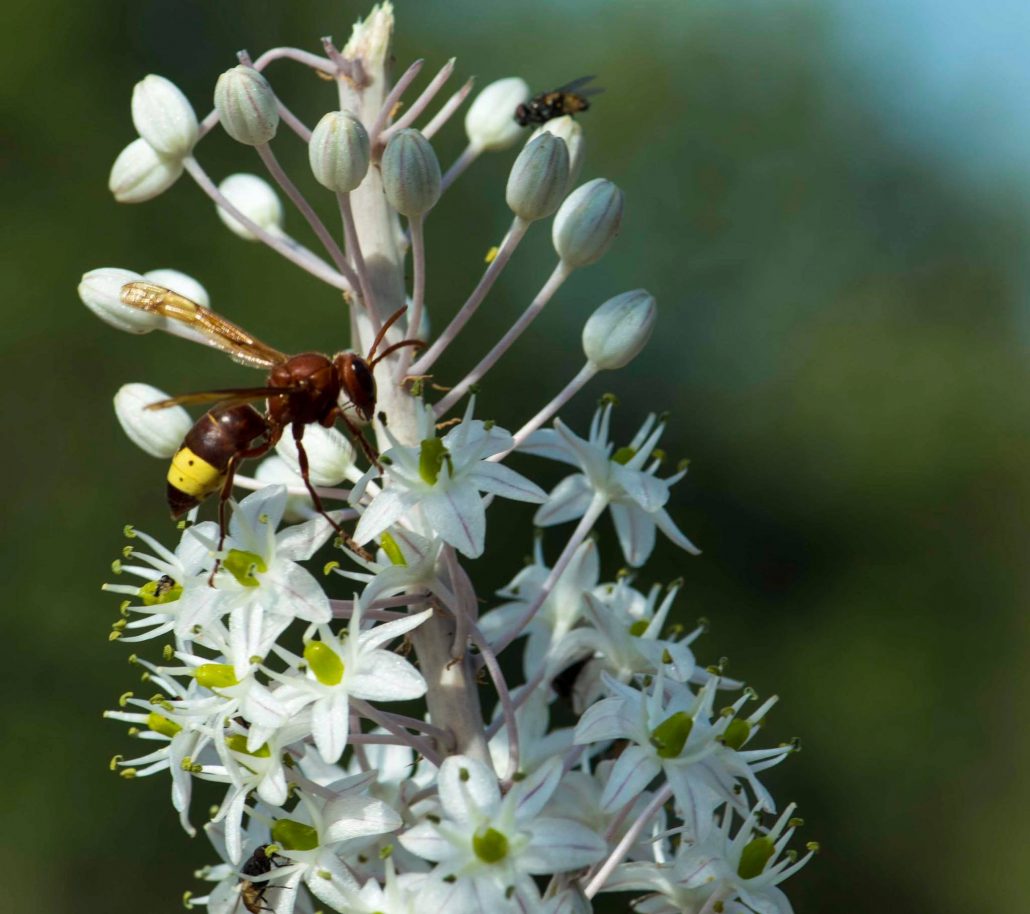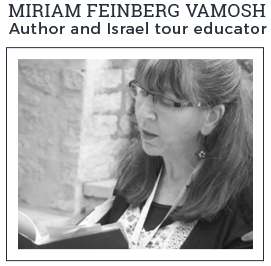Sign of the Sea Squill
Sign of the Sea Squill
“I wouldn’t believe it if I wasn’t living it,” a friend emailed me from abroad the other day. I second that. Even if we and our loved ones manage to stay physically healthy, experts say our social skills are wilting.* If we’re following the guidelines, we’ve had to give up gatherings, and with our expressions mostly hidden in public by masks, we can no longer read each other (if we ever could). So, for some Rosh Hashanah inspiration and comfort I turn once again to the world of nature, and a plant that literally rises to the occasion – the sea squill.

Seemingly out of nowhere, from one day to the next, there they are. Stalks, two feet tall or more, to which cling hundreds of tiny white, star-like blossoms, slender, stately white candles. They have a mission: In the Holy Land, it’s not the changing colors of the leaves that symbolize autumn; it’s the much more subtle arrival of the sea squill. It’s nature whispering to us that the season is changing. Sea squills are full of promise that the hard, dry summer is almost over, that seemingly dead ground will miraculously be transformed in the months to come into emerald carpeted hills and valleys studded with wildflowers nourished by the winter rains. And the sea squills are everywhere – in the hills of Jerusalem around my home, along the sand dunes near Caesarea, the slopes of Mount Carmel and Galilee, at Makhtesh Ramon in the Negev. The flowers emerge first at the bottom of the stalk; every day another few dozen tiny white blooms open above the previous ones.
Boundaries have become the hallmark of our times. Here in Israel, in my home town of Har Adar, no more than four at a time are allowed in our little grocery store; in my granddaughter Tamar’s third-grade class, no more than about a dozen kids in a “capsule” (but they all mix together at recess…don’t get me started); in the tiny post office of neighboring Abu Ghosh, only one at a time inside; at the church in Jaffa that Arik’s health aide Lea attends – a limit of 20 at services, outdoors.

Sea squills and boundaries go back a long way: The Talmud (Baba Batra 55a, 56a) says sea squills marked the borders between the Israelite tribes, and between neighboring fields. Why? Because they believed that the plant rejuvenated every year in exactly the same place. Tall and straight in its white rows, it became the talmudic version of the white picket fence. There was a rule against uprooting these faithful sentinels; God forbid (literally!) we should misplace our property boundaries (Deut. 19:14).
Nourishing… and toxic
The energy-packed bulbs of the sea squill (Urginea maritima), attract animals that can dig into the soil for them. Talmudic sages (Shabbath 128a) imagined that Noah took sea squills with him into the ark as food for the deers he brought along. Some scholars say that deers really do eat them. They must be one of the few animals that can, because to protect themselves from being over-gorged, they produce a toxin and they even contain a skin irritant. That would certainly discourage any attempts at boundary stealing.
In spite of (or because of) its toxic qualities, the ancients believed the sea squill could stimulate a weak heart and treat a variety of other ailments. The ancient Egyptians hung it in their doorways to encourage fertility – I’m guessing due to the hundreds of flowers on every stalk. Other ancient writers recommended it as a guardian against evil spirits.
The Hebrew for sea squill is hatzav. The word comes from the root “hew,” as in hewing rock or wood. That’s probably because it can cleave its way through the rockiest soil (with which the Holy Land is so amply blessed).

Experts tell us that the flower is full of nectar, and has no mechanisms to prevent nectar “robbery.” It’s therefore popular with a large variety of insects, including wasps and flies that they say are known as “nectar robbers” because they don’t benefit the flower by pollinating. An altruistic plant, then, although not self-sacrificing – there’s that toxin to contend with.
At the end of this week we’ll celebrate Rosh Hashanah, the Jewish New Year. I chose the sea squill for my holiday message this time because like the sycomore I wrote about in my previous post, to me, it’s a symbol of hope for self-renewal and reinvention that we so desperately need.
Dedicated to firefighters, first responders and medical professionals, who have our hopes and prayers for their safety and continued fortitude.

Want to know more?
*https://www.nytimes.com/2020/09/01/sunday-review/coronavirus-socially-awkward.html
wildflowers co.il/ https://www.wildflowers.co.il/english/plant.asp?ID=26
Special thanks to my neighbor, the photographer Moshe Schreiber and to photographer Leora Zeira for their generous permission to use their photos.

